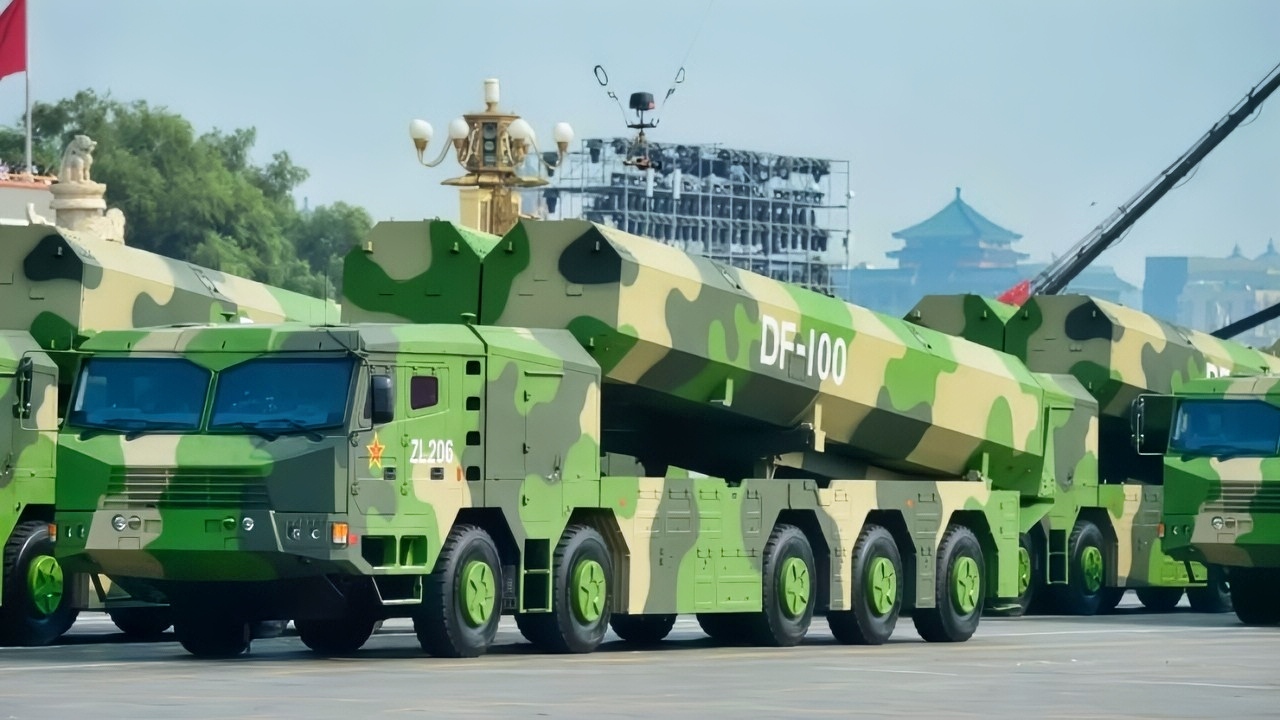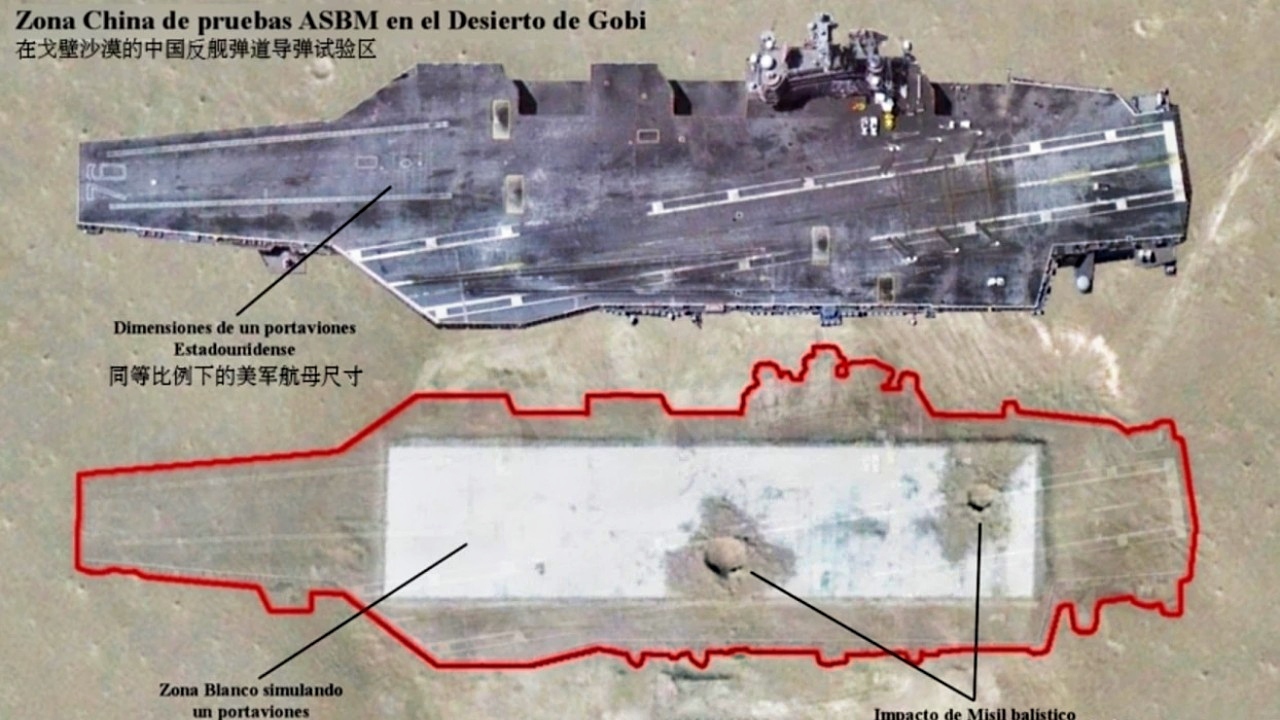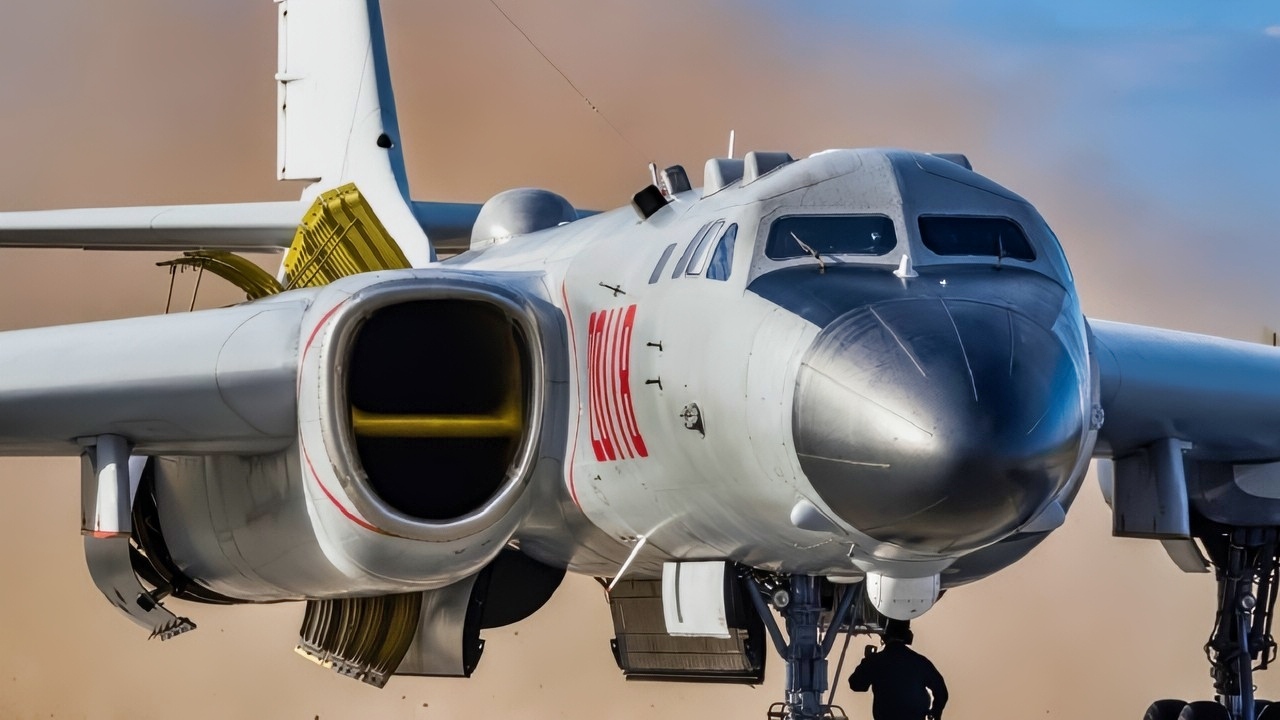Key Points and Summary – China is arming its H-6N bombers with the DF-100, a Mach 4 supersonic cruise missile with a range of 3,000-4,000 km.
-This new air-launched variant poses a significant threat to U.S. Navy assets, distinct from the well-known “carrier-killer” ballistic missiles.

PLAAF Xian H-6M makes a turn over central Changzhou.
-An H-6N can launch the DF-100 from unpredictable angles and great distances (up to 2,000 miles from the target), making pre-launch detection much harder than for ground-based missiles.
-The primary danger is a “bolt out of the blue” salvo attack, where a large number of supersonic missiles could overwhelm even layered U.S. carrier strike group defenses.
China’s H-6 Bomber Could Fire Mach 4 Missiles at U.S. Military Forces
China’s H-6N bomber may be armed with the DF-100 supersonic cruise missile, which would introduce a new level of threat to U.S. and allied assets in the Pacific.
The DF-100 would make new angles of attack possible on U.S. Navy ships, and the H-6N bombers would benefit from the speed, precision guidance, and 3,000-kilometer range of the weapon.
A New Threat
China’s ground-launched DF-26 and DF-21 are well-known threats to carriers.

DF-100 Missiles: X Screengrab.
These so-called carrier-killer missiles have mobile launchers, extended ranges, and guidance systems to help them hit moving Navy ships.
The People’s Liberation Army (PLA) is also known to be developing dual-use anti-ship cruise missiles that are hypersonic and perhaps nuclear-capable.
Much less discussed to this point, the PLA is also revealing its supersonic DF-100, a maneuverable supersonic cruise missile fired from both air and ground platforms to ranges as far as 3–4,000 km.
A landfired range of 4,000 km rivals the 2000-mile reach of the DF-26, and while it is not hypersonic—meaning the ability to travel above Mach 5—the supersonic DF-100 introduces nearly unparalleled speeds, reaching Mach 4.

DF-26 China Missile Attack on Fake Aircraft Carrier Cut Out. Image Credit: Chinese Weibo Screenshot.
Air Launched DF-100
Ground-launched PLA cruise and ballistic missiles have been on the Pentagon’s radar for years and are regularly cited in the Department of War’s annual China report, yet air-launched supersonic cruise missiles could enable previously impossible attacks on carriers.
A PLA Air Force (PLAAF) H-6N armed with such a weapon could maneuver into strike positions that are much more difficult to defend against.
While mobile ground launchers can be difficult to track and are often moved into caves and behind buildings to remain undetectable by satellite, they emit light, heat, and acoustic signatures upon launch that satellites and sensors are able to detect quickly.
Detection is especially efficient if drones, surveillance planes, or surface reconnaissance nodes are in position to monitor launch activity. They would see a cruise missile just prior to or just after launch, and alert the systems capable of destroying the threat.
This kind of intercept would be much less likely against an air-launched DF-100, fired in the air from up to 2,000 miles away from its target.
Salvo Threat
The DF-100 may be especially deadly when used as part of a salvo attack.
Often referred to as a “bolt out of the blue,” a salvo involves launching a large number of missiles at one time to overwhelm air defenses, jam radar, and ensure a number of weapons continue on to their targets.
A bolt out of the blue at supersonic speed would be extremely difficult for even the best ship- and ground-based defenses to intercept. Ship-launched interceptor missiles—such as an SM-3 or SM-6 guided by Aegis radar—track incoming missiles.
Carrier Strike Groups (CSGs) are supported by destroyers and cruisers armed with a range of ship defenses, such as the Evolved Sea Sparrow Missile Block II, an interceptor with sea-skimming mode able to intercept cruise missiles flying parallel to the ocean at low altitudes.
U.S. Navy warships are also armed with Electronic Warfare capabilities, lasers, and the ability to share their target track data among networked surface, air, and ground nodes.
The question thus is how vulnerable CSGs and U.S. assets on the ground in the Pacific would be to a DF-100 salvo.
Responding to the threat may require new concepts of operation, calling for a layered, multi-domain ability to track H-6N bombers and ground launchers before or immediately after any launch.
An effective response would require drones, surveillance planes, satellites, and radar nodes sufficient to track and destroy as many ground- or air-launched munitions as possible after a salvo.
About the Author: Kris Osborn
Kris Osborn is the President of Warrior Maven – Center for Military Modernization. Osborn previously served at the Pentagon as a highly qualified expert in the Office of the Assistant Secretary of the Army—Acquisition, Logistics & Technology. Osborn has also worked as an anchor and on-air military specialist at national TV networks. He has appeared as a guest military expert on Fox News, MSNBC, The Military Channel, and The History Channel. He also has a Master’s Degree in Comparative Literature from Columbia University.
More Military
China’s H-20 Stealth Bomber Has a Message for the U.S. Air Force
China’s New J-35 Stealth Fighter Has a Message for the U.S. Air Force
China Is Studying the Ukraine War to Become a Drone Superpower
The Road to a China-America Nuclear War
China Could Fire Mach 6 Hypersonic Missiles from Bombers to Sink Navy Aircraft Carriers










